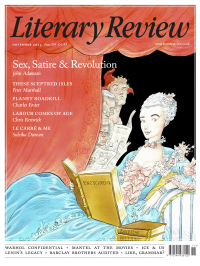Patrick Scrivenor
Giving a Hoot
What an Owl Knows: The New Science of the World’s Most Enigmatic Birds
By Jennifer Ackerman
Oneworld 352pp £16.99
The Owl: A Biography
By Stephen Moss
Square Peg 208pp £14.99
Owls are certainly lovable. But bright? In many cultures they have been associated with wisdom, but they have a direct, often yellow-eyed glare that makes them look mindlessly gung-ho. As these two books show, however, owls are bright. In terms of problem-solving, they may lag behind crows and parrots, but the owl brain can do wonderful things.
To pinpoint sound, barn owls have space-specific neurons in their brains that perform advanced maths as they transmit information, all in far less than the blink of an eye. Furthermore, not content with computing incoming information, the barn owl’s brain also assesses its likely accuracy as more information becomes available. It does this in perfect conformity with a statistical method known as Bayesian inference. Barn owls evolved in the early Oligocene, rather more than twenty million years before Thomas Bayes had his light-bulb moment about reconciling variable probabilities. In short, throughout their history, barn owls have been carrying around in their heads miniaturised direction-finding equipment far more accurate and far faster than anything available in the most advanced missile.
Barn owls are not alone. Owls have relatively small brains, though not necessarily in proportion to their body size. (Most owls are smaller than they appear: profuse feathering bulks them out.) However, it has long been recognised that brain size is not the critical determinant of intelligence: it is

Sign Up to our newsletter
Receive free articles, highlights from the archive, news, details of prizes, and much more.@Lit_Review
Follow Literary Review on Twitter
Twitter Feed
Though Jean-Michel Basquiat was a sensation in his lifetime, it was thirty years after his death that one of his pieces fetched a record price of $110.5 million.
Stephen Smith explores the artist's starry afterlife.
Stephen Smith - Paint Fast, Die Young
Stephen Smith: Paint Fast, Die Young - Jean-Michel Basquiat: The Making of an Icon by Doug Woodham
literaryreview.co.uk
15th-century news transmission was a slow business, reliant on horses and ships. As the centuries passed, though, mass newspapers and faster transport sped things up.
John Adamson examines how this evolution changed Europe.
John Adamson - Hold the Front Page
John Adamson: Hold the Front Page - The Great Exchange: Making the News in Early Modern Europe by Joad Raymond Wren
literaryreview.co.uk
"Every page of "Killing the Dead" bursts with fresh insights and deliciously gory details. And, like all the best vampires, it’ll come back to haunt you long after you think you’re done."
✍️My review of John Blair's new book for @Lit_Review
Alexander Lee - Dead Men Walking
Alexander Lee: Dead Men Walking - Killing the Dead: Vampire Epidemics from Mesopotamia to the New World by John Blair
literaryreview.co.uk